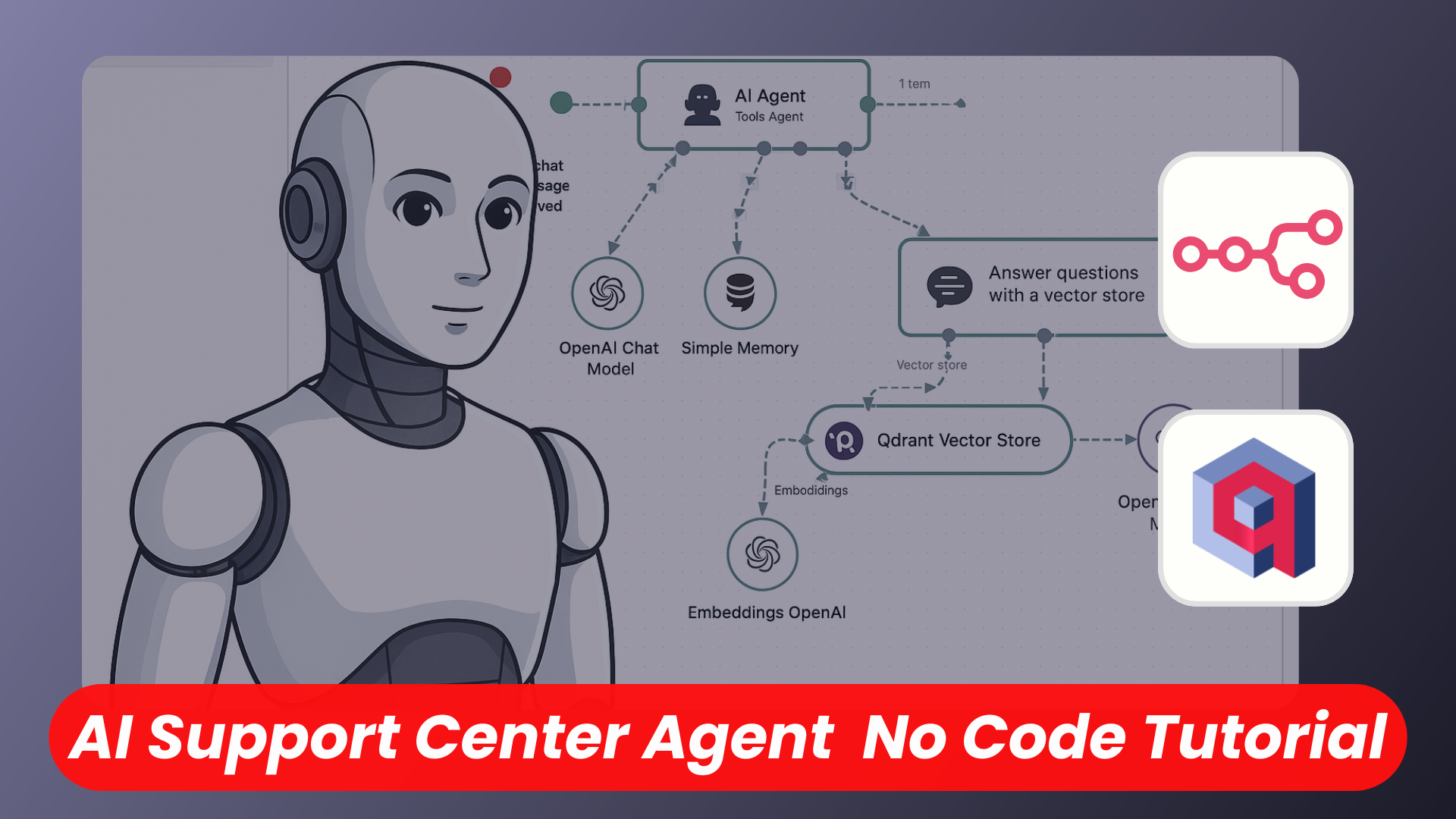n8n AI Agents with Qdrant Vector Store Knowledge Base

Do you want to build the ultimate support center for your business?
In this tutorial, we’re building a fully automated support center using n8n and Qdrant — where AI handles customer questions using your own knowledge base. No more repetitive replies, just smart, fast support available 24/7.
If you’re new to n8n, it’s a powerful no-code workflow automation tool. Combined with Qdrant, a high-performance open-source vector database, you can create an intelligent AI support agent that pulls accurate, real-time answers from your documentation, FAQs, or product data.
Watch the video tutorial on our YouTube channel
Let’s break down how this works step by step.
AI Agent Chat Workflow
At the core of this setup is n8n’s AI Agent Chat workflow — a flexible and modular approach to handle incoming user messages, process them with AI, and return helpful responses.
Here’s what the typical flow looks like:
- Trigger – This could be a webhook, email, form submission, or chat message.
- Pre-processing – Clean and format the user input, detect intent, and decide what tools or data sources are needed.
- AI Agent – An n8n node powered by OpenAI or another LLM provider acts as the brain of the system.
- Tool Usage – Depending on the context, the agent can perform actions like calling APIs, querying databases, or — as we’ll see — accessing a knowledge base.
- Response Delivery – Send back the final answer via your preferred channel (Slack, email, web UI, etc.).
This workflow is highly customizable and allows the AI to act not just as a responder, but as an intelligent orchestrator capable of dynamic decisions.
Knowledge Base with Qdrant
For the AI to provide relevant answers, it needs access to your content in a format it can understand. That’s where Qdrant comes in.
Qdrant is a vector database, which means it can store and retrieve pieces of information (chunks of text) based on semantic similarity, not just keyword matching. Perfect for powering AI search and Q&A experiences.
Here’s how to build your knowledge base:
- Chunk your content – Split your documents into manageable sections (e.g. 100-300 words each).
- Embed with AI – Use a language model to convert each chunk into a numerical vector.
- Store in Qdrant – Save the vectors along with the original text into Qdrant collections.
- Query by similarity – When a user asks something, embed their question and search Qdrant for the most similar chunks.
This makes it easy for the AI to "remember" your documentation and answer contextually, even for complex or fuzzy queries.
Use Knowledge Base Tool
Within the n8n AI Agent workflow, you can enable the "Knowledge Base" tool. This tool connects your agent to your Qdrant instance and lets it fetch relevant content when needed.
Here’s how it works:
- Tool Selection – The AI agent decides whether it needs more context to answer.
- Tool Call – It sends the query to the Knowledge Base tool, which performs a semantic search in Qdrant.
- Result Injection – The top-matching chunks are injected into the agent’s context.
- Answer Generation – With your knowledge base now in memory, the AI crafts a precise, personalized response.
This process feels seamless to the user — but behind the scenes, it’s a smart collaboration between LLM reasoning and vector search.
Conclusion
Thank you for reading! We hope you enjoyed discovering how to combine n8n and Qdrant to build a powerful AI-powered support system.
Whether you’re running a SaaS product, managing internal documentation, or just tired of answering the same customer emails — this setup is entirely reusable .
